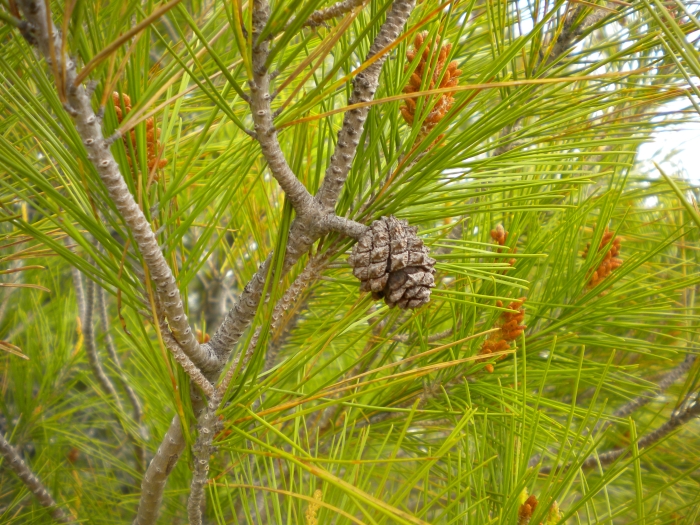Aleppo Pine
(Pinus halepensis)
Aleppo Pine (Pinus halepensis)
/
/

Balles2601
CC BY-SA 4.0
Image By:
Balles2601
Recorded By:
Copyright:
CC BY-SA 4.0
Copyright Notice:
Photo by: Balles2601 | License Type: CC BY-SA 4.0 | License URL: https://creativecommons.org/licenses/by-sa/4.0 | Uploader: Balles2601 | Publisher: Wikimedia Commons | Title: Pinus_halepensis_2601.JPG | Notes: User created page with UploadWizard |












































































Estimated Native Range
Summary
Pinus halepensis, commonly known as Aleppo Pine, is an evergreen tree native to the Mediterranean Basin and parts of North Africa, where it thrives in coastal areas, lowland hills, and open woodlands. It is a small to medium-sized tree, typically reaching 15–25 m (49–82 ft) in height, with a trunk diameter up to 60 cm (24 in). The bark on mature trees is orange-red, thick, and deeply fissured at the base, becoming thinner and flaky in the upper crown. The needles are slender, 6–12 cm (2.4–4.7 in) long, and distinctly yellowish-green, contributing to the tree’s aesthetic appeal.
Aleppo Pine is valued for its heat and drought tolerance, fast growth rate, and ornamental qualities, making it a popular choice for gardens, parks, and landscapes in hot, dry regions such as Southern California and the Karoo in South Africa. It is often used for urban planting, windbreaks, and reforestation projects. This species prefers full sun and can tolerate a range of soil types, provided they are well-drained. While it is relatively low-maintenance, it can be susceptible to pine wilt disease and bark beetles. Gardeners should be cautious about its potential invasiveness outside its native range and consult local regulations before planting.CC BY-SA 4.0
Aleppo Pine is valued for its heat and drought tolerance, fast growth rate, and ornamental qualities, making it a popular choice for gardens, parks, and landscapes in hot, dry regions such as Southern California and the Karoo in South Africa. It is often used for urban planting, windbreaks, and reforestation projects. This species prefers full sun and can tolerate a range of soil types, provided they are well-drained. While it is relatively low-maintenance, it can be susceptible to pine wilt disease and bark beetles. Gardeners should be cautious about its potential invasiveness outside its native range and consult local regulations before planting.CC BY-SA 4.0
Plant Description
- Plant Type: Tree
- Height: 15-45 feet
- Width: 18-30 feet
- Growth Rate: Moderate
- Flower Color: N/A
- Flowering Season: Non-Flowering
- Leaf Retention: Evergreen
Growth Requirements
- Sun: Full Sun
- Water: Low
- Drainage: Medium
Common Uses
Bird Garden, Deer Resistant, Drought Tolerant, Erosion Control, Fragrant, Low Maintenance, Rabbit Resistant, Salt Tolerant, Street Planting
Natural Habitat
Native to Mediterranean Basin coastal areas, lowland hills, and open woodlands
Other Names
Common Names: Aleppo-Kiefer, See-Kiefer, Strand-Kiefer, Pino Carrasco, Pino De Alepo, Pin D’Alep, Pin De Jérusalem, Aleppófenyo, Pino D’Aleppo, Sappino
Scientific Names: , Pinus halepensis, Pinus maritima, Pinus halepensis var. ceciliae, Pinus halepensis var. minor, Pinus ×pinasteroides, Pinus hispanica, Pinus alepensis, Pinus ceciliae, Pinus halepensis var. pendula
GBIF Accepted Name: Pinus halepensis Mill.